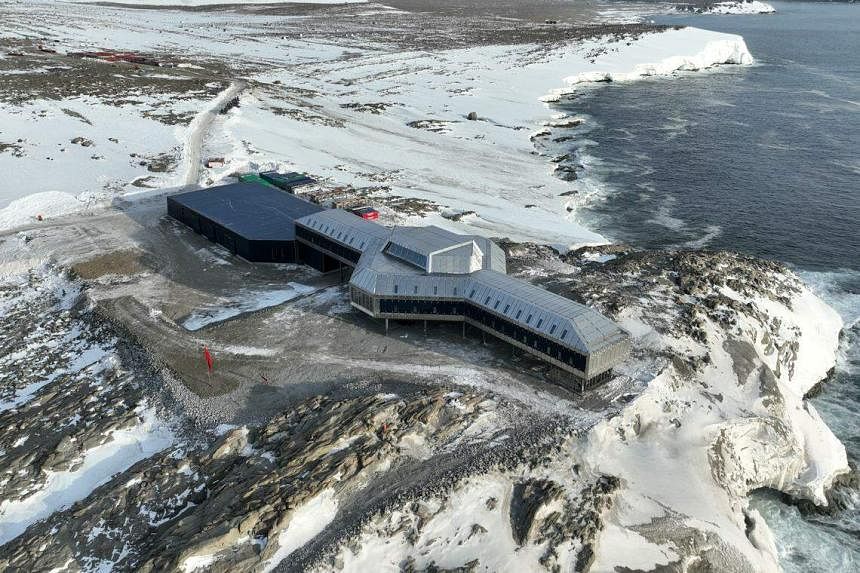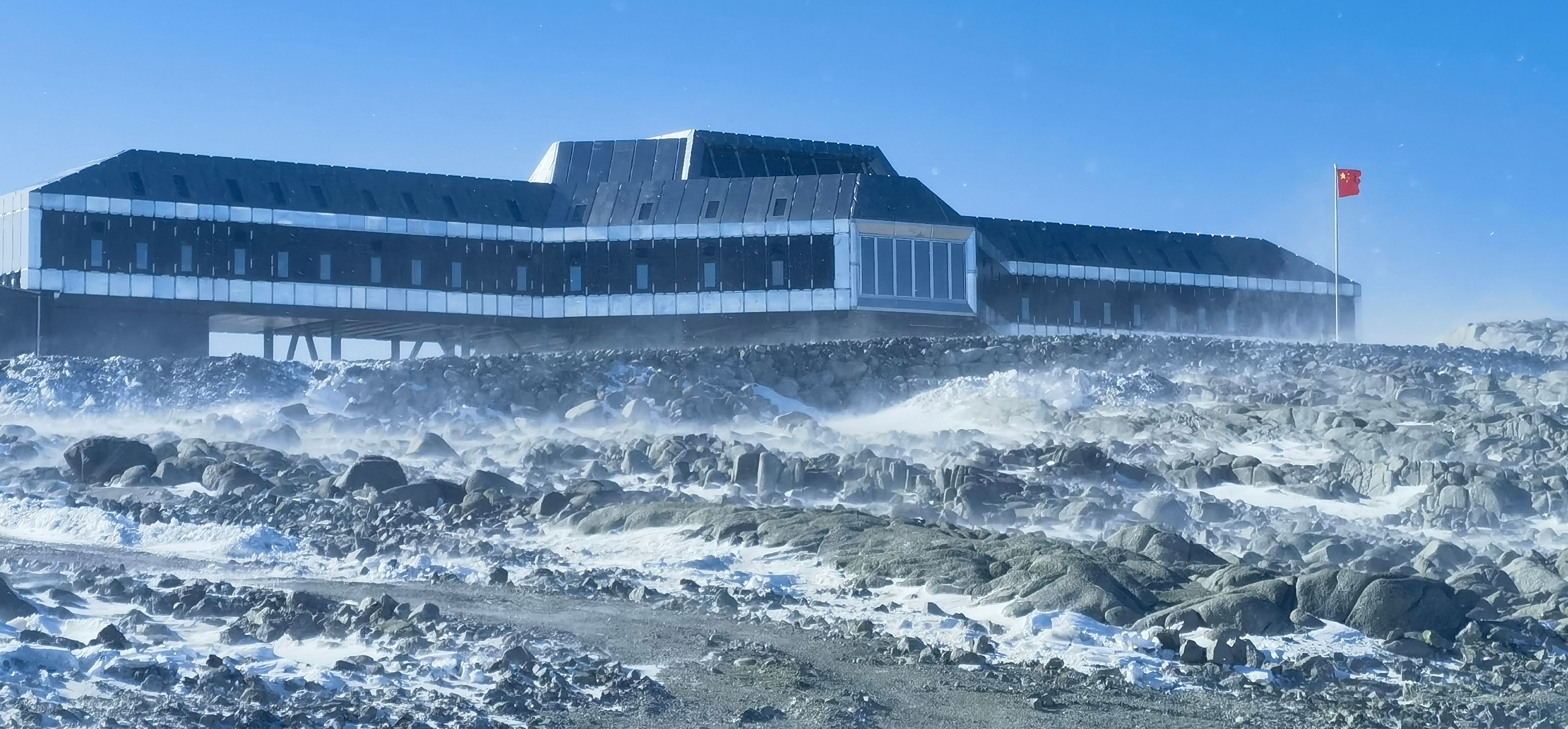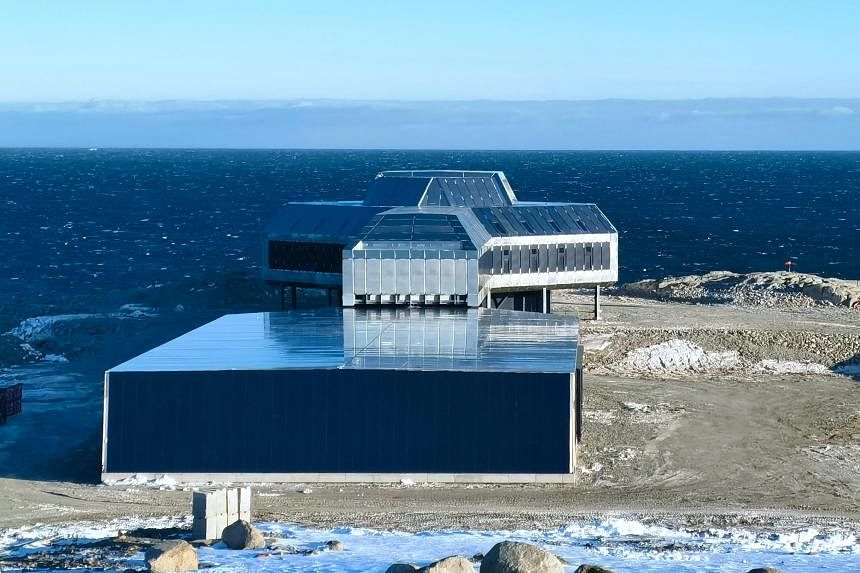SINGAPORE – It was to some fanfare that Beijing recently announced the opening of a new research station in Antarctica, its fifth on the world’s coldest, southernmost continent.
The launch of Qinling station on Feb 7, however, has sparked concerns about China’s ambitions on the continent, which has no permanent inhabitants, unlike the Arctic.
The expansion seeks to position China as a major scientific player in Antarctica, in line with its emerging great-power status, said Professor Marc Lanteigne, who teaches political science at the University of Tromso: The Arctic University of Norway.
“At the same time, it (could) potentially lay the groundwork for increased economic activities should the legal situation in the region change in the coming decades,” Prof Lanteigne told The Straits Times.
Mining is currently banned in Antarctica under the Protocol on Environmental Protection to the Antarctic Treaty, also known as the Madrid Protocol, which came into force in 1998. A concern is that China may press for a rethinking of the mining opportunities on the continent when this treaty is up for review in 2048, said Prof Lanteigne.
He noted that while China has research and economic interests on both poles, it faces less competition in Antarctica, given that the continent has no permanent inhabitants.
Assistant Professor Benjamin Ho said in the Arctic, countries such as Russia and the United States have staked claims, so China could see this as an opportunity to venture within Antarctica. “You can’t call yourself a global great power if you don’t have a presence around the globe,” said Prof Ho, who specialises in Chinese foreign policy at the S. Rajaratnam School of International Studies.
“I wouldn’t read too much into it until they have a more permanent and sustainable presence in the region… It’s more symbolic than anything. At the moment, it does not represent any strategic pivot beyond the regions China wants to go,” he added.
China said that Qinling station, located on the previously uninhabited Inexpressible Island in the Ross Sea, will “contribute to humanity’s scientific understanding of Antarctica”. It will also be a platform for joint scientific exploration between China and other countries, and advance peaceful and sustainable development in the region, China added.
However, the Centre for Strategic and International Studies, an American think-tank, said it can also collect signals intelligence from Australia and New Zealand, the two nearest countries, as well as telemetry data on rockets launching from newly established space facilities in both countries.
Beijing has dismissed such claims, stressing that the station is “built and operated in full compliance with international rules and procedures”.
Said Prof Ho: “While it is certainly possible for the Chinese to use these bases for strategic geopolitical purposes, I would not think the Antarctic is top of their list, given they have other domestic priorities like their economy to think about.”

In its Arctic policy published in 2018, China referred to itself as a “near-Arctic state”.
This term has courted controversy as China’s coasts do not border the Arctic Ocean. Beijing has also received pushback against its “Polar Silk Road” expansion plans, which aim to establish new sea shipping routes through the Arctic Ocean.
On its intentions for Antarctica, Beijing published a White Paper in 2017, which specified its research and use of biological resources on the continent, including krill fishing, with no mention of mining.
But the White Paper does not constitute an official Antarctic policy and there is no telling when such a policy, serving as a guide for China’s actions, may be put out, said Associate Professor Liu Nengye at Singapore Management University’s Yong Pung How School of Law.
The launch of Qinling, which is not far from the world’s largest Antarctica station, the United States’ McMurdo which can accommodate nearly 1,500 people, and New Zealand’s Scott Base, will greatly help China’s ambitions to become a serious player in Antarctica governance, said Prof Liu, who specialises in ocean law and governance.

Qinling is China’s third Antarctica research station that operates throughout the year, along with the Great Wall and Zhongshan stations. Its other two stations, Kunlun and Taishan, run only during summer.
The 5,244 sq m Qinling station can accommodate 80 people in the summer and 30 in the winter, according to Chinese state media China Daily.
Since 2013, Beijing has proposed to establish an Antarctic Specially Managed Area around Kunlun station, which would allow China to maintain more stringent environmental protection of the surrounding space of potentially thousands of square kilometres. Such proposals have to be approved by the Antarctic Treaty Consultative Parties, which consists of 29 countries including Russia, the United Kingdom, the US and China.
While the Madrid Protocol permits such an area, the proposal received pushback from other governments, including the US, which questioned China’s motives.
There are currently seven such areas, of which two are managed by the US, one by Australia and the remaining four jointly managed by countries including Brazil, Poland, Chile and India.


